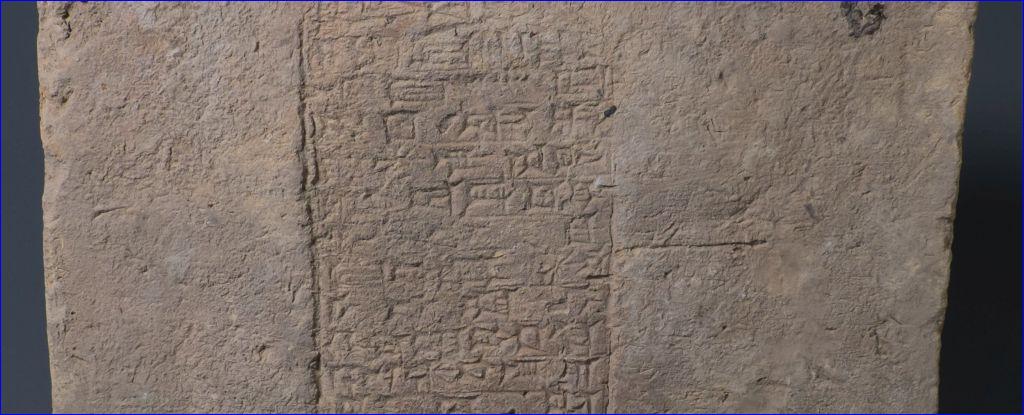


 Slemani Museum)
Slemani Museum)
Made some 3,000 years ago, the Mesopotamian bricks contain grains of iron oxide that, to the right interpreter, reveal fascinating changes in the magnetic field that runs through and envelops Earth in a protective barrier.
The breakthrough comes in the form of a conveniently stamped description that allows scientists to determine the age of the bricks, which in turn allows for the precise dating of any geological records they contain.
The method gives us a new way to better understand how our planet's magnetic field has changed and evolved over time -- which in turn could help us make better predictions about its present and future behavior.
"We often depend on dating methods such as radiocarbon dates to get a sense of chronology in ancient Mesopotamia," explains archaeologist Mark Altaweel of University College London.
"However, some of the most common cultural remains, such as bricks and ceramics, cannot typically be easily dated because they don't contain organic material. This work now helps create an important dating baseline that allows others to benefit from absolute dating using archaeomagnetism."
Earth's magnetic field isn't static, but changes over time. It's generated by the geodynamo in the planet's core; there, a rotating, convecting, and electrically conducting fluid converts kinetic energy into electric and magnetic fields that spin out into the space around us. Changes in the magnetic field can be the result of outside influences, such as the solar wind; or from changes inside the planet, where the geodynamo churns.
However they're induced, these changes can be recorded in materials on the surface. For example, in molten magma, magnetic grains will align with the Earth's magnetic field, sort of setting in that position as the magma cools and hardens into volcanic rock. Scientists can use these rocks as a record of the magnetic field, a field of study known as paleomagnetism.
Led by archaeologist Matthew Howland of Wichita State University in the US, a team of researchers studied Mesopotamian bricks as a way to advance the study of archaeomagnetism: the study of Earth's magnetic field as preserved in human-made objects.
The technique is pretty simple. Each of the 32 Mesopotamian clay bricks in the study is stamped with the name of the king that reigned at the time the brick was made. In order to date the material, the researchers narrowed down the most likely range of years during which each king was probably ruling.
Then, they carefully chipped a tiny piece off each of the bricks, and used a magnetometer to measure the alignment of microscopic grains of iron oxide embedded therein. This technique allowed them to broadly reconstruct the behavior of the planetary magnetic field over a period of about 2000 years, from the 3rd to the 1st millennium BC.
Then, they compared their results to other reconstructions of the magnetic field derived from archaeomagnetic studies.
Collectively, this large pool of data from around the globe hints at something known as the Levantine Iron Age geomagnetic Anomaly (LIAA), a mysterious spike in magnetic field strength thought to have taken place over what is now Iraq between around 1050 and 550 BC.
The team's reconstruction also confirmed the existence of the LIAA, providing one of the few records of the anomaly from within Iraq itself. What's more, the analysis revealed short, dramatic fluctuations during the reign of Nebuchadnezzar II between around 604 and 562 BC, showing that Earth's magnetic field can change quite significantly on short timescales.
The work is a double-edged achievement: matching the bricks to the magnetic field works in the other direction, giving scientists a tool for confirming the dates that certain kings ruled Mesopotamia.
This is really neat, because although we know the order of succession, the dates on which each king ascended the throne has remained uncertain, due to incomplete historical records.
"The geomagnetic field is one of the most enigmatic phenomena in earth sciences," says geophysicist Lisa Tauxe of the Scripps Institution of Oceanography in the US.
"The well-dated archaeological remains of the rich Mesopotamian cultures, especially bricks inscribed with names of specific kings, provide an unprecedented opportunity to study changes in the field strength in high time resolution, tracking changes that occurred over several decades or even less."
The research has been published in the Proceedings of the National Academy of Sciences.

or register to post a comment.